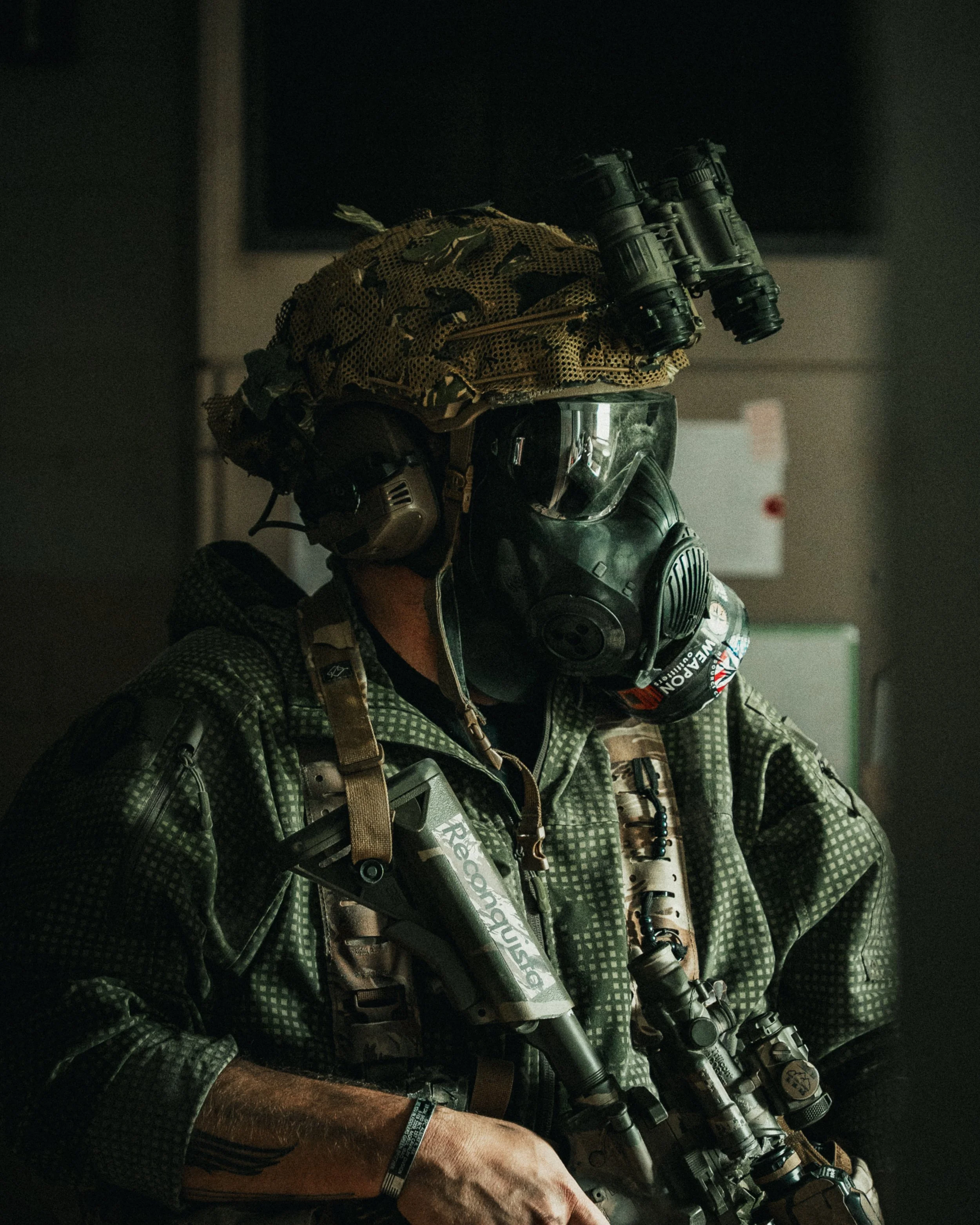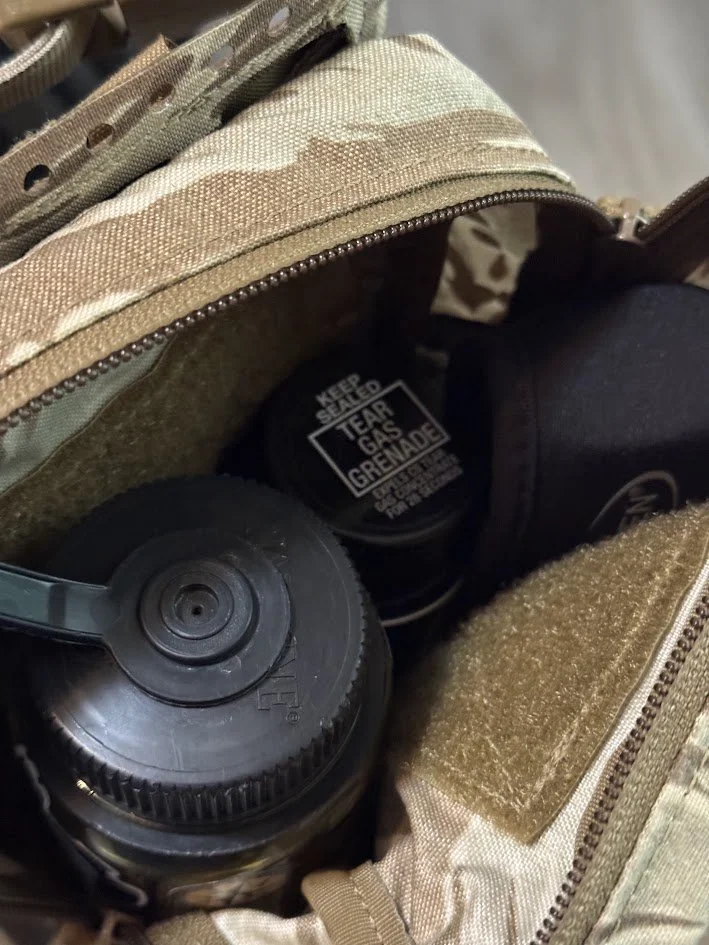Gas Masks and Chemical Irritants: Considerations and Use Case
Gas masks and Chemical Irritants (CI) are powerful, readily available, force multipliers that are almost entirely ignored or under-appreciated. They have strong use cases even outside of a worst case societal collapse, and yet, are rarely a part of many prepared citizen’s kit.
Gas Masks and CI go hand in hand with each other. You can not use CI without first protecting your team. You can still find use for a gas mask without integrating CI’s into your plan, but you are leaving capability on the table in doing so.
Today I’m going to talk about what the use cases are, some of the considerations of working in a mask, and touch on some gear recommendations.
UP FRONT. I am not a CBRN expert. I am not going to dive into how a gas mask is used to counter CBRN threats, TICS/TIMS threats, and which filters are rated for what specific threats. I will link resources for you to dive into those topics in the last post in the thread.
What I am talking about mainly is the defensive and offensive use of CI’s to give you an advantage. Think hand thrown (or tube launched if you are super cool) CS or tear gas grenades.
As mentioned above, a mask is also a great thing to have for normal, run of the mill industrial accidents or fires. We have seen numerous examples of this happening here recently in the states, and a mask may be the difference from escaping a contaminated area unharmed, or suffering lifelong medical issues or death.
Use Cases:
-Area Denial/crowd control: Jargon aside, this just means discouraging people from going into a specific area. This could be your house, your street, or attacking your vehicle in a riot type situation. Dropping a CS gas grenade out of your car window is a fantastic way to non-lethally discourage folks from doing you harm while you escape.
While it won’t deter a determined foe forever, it will keep the less committed away, and encourage them to find another, softer, less irritating target. Worst case, if you do end up getting into it with them, they will be having a hard time breathing and seeing, giving you an advantage.
-In a fight: In a more extreme scenario, where lethal force is being exchanged, hitting your opponent with a CI can provide you reaction time and space to break contact, or press an attack. It is decidedly more difficult to return effective fire when your eyes are on fire and you can’t breath without compulsively coughing.
-In a close-quarters fight: The best way to win at CQB is to never do CQB. Anyone who has done it, trained it, and isn't self-delusional will agree with me here. However, we live in a world dominated by structures, both man made and natural. If you are preparing for a collapse scenario and not at all familiar with the principles, techniques, and execution of building clearing, that is a weakness in my point of view.
CI’s are vastly more effective in enclosed spaces, and inside a building is a prime place to use them. When clearing rooms, it is often a coin flip choice on which way you go first in a room or building. If you have a way to locate your opponent inside of the building, you can take advantage of that fact by, for example, burning them down through a wall. A CI is a great way to make someone start involuntarily making noise, coughing, sneezing, or verbalizing.
Gas Mask Considerations
For those not familiar with their use, and as a primer for those looking to get into using a mask as a part of their plan, I’m going to go over some of the points I have learned from my time using a mask.
Physical constraints: Wearing a gas mask has a number of ways to impact you physically. It is hotter, it is harder to breath, it is harder to see. All of these can be overcome, but you need to make adjustments in how you work to accommodate them. For example, slowing the pace of your movement to keep your breathing under control, turning your head more often to maintain situational awareness, and ensuring you have hydrated prior to using a mask for a prolonged time.
Communication restraints. Hearing someone talk through a mask is difficult, both from a clarity and volume standpoint. To effectively use a mask, you need a way to communicate with others.
The first option is a VPU or Voice Projection Unit. This is a small speaker and microphone system that attaches to the front of your mask. They make talking more normal, and enable you to use radio communications more normally. The downsides are that they can be expensive, and also project your breathing. I was recently doing Opfor for a CQB course, and at night, with no nods, i could pinpoint the assaulting team by the sound of one team member who was using a VPU and breathing heavily. It sounded like darth vader coming down the hall.
The second option is to use limited verbal commands, but rely more on hand and arm signals. This takes coordination and prior training with your team to ensure everyone has a firm understanding of complex hand and arm signals, and is of course limited by line of sight and your teams awareness level.
Hydration:
While in this particular use case, we are not discussing extended operations in a CBRN environment, it is still vital to have a way to consume water while wearing a mask if you end up needing it for a more prolonged situation such as a chemical spill. Your mask needs to be equipped with a drinking hose, and you need to have water containers with the appropriate cap to allow drinking. If you don't have a way to hydrate in your mask, you essentially don't have a mask past a certain point, because you will eventually take yourself out of the situation via dehydration.
Shooting: Shooting a rifle with a gas mask is a challenge in and of itself. Depending on your gas mask, your cheek weld will be different and you may not be able to get behind your optic of your rifle. This is one area where taller optic mounts come in extremely handy, and is part of the reason all of my optics are raised to some extent. You need to practice shooting in your mask if you plan on using one, plain and simple.
Equipment Adjustments. This mainly revolves around your helmet setup. You need to ensure your helmet doesnt interfere with your mask, or break the seal of your mask under normal circumstances or impacts. You may need a chin strap extender to go around the extra bulk. Your ear protection may not seal up properly anymore, requiring the use of in-ear protection, or lowering your radio volume to avoid being heard.
Items on your shoulder straps or high up on your chest rig/plate carrier may also interfere with your filter canister, it’s something to be sure you are testing out.
Gas mask and CI gear recommendations
Here is what I use and suggest. I will link more in depth resources for you to explore on your own.
Mask: Avon C50. the only NIOSH certified mask available for civilian purchase. Made in the USA. It uses 40mm NATO filters, the most common and inexpensive filters available. Its sister mask, the FM50 issued to the US military, is also a fantastic choice, but does require proprietary filters, or a 40mm adapter (adding another potential failure point). The replaceable outsert lenses allow you to use them safely with sims, airsoft, or UTMs, shield from the sun, lasers, and even cutting torches.
They can be had used, and on sale for under $200.
Other options from MIRA etc may also be fine. They are made overseas, and do not pass the same stringent randomized quality testing that AVON does.
Filters: i use the GPCF50 CBRN Filter from Avon protection. They are rated against almost everything that i can reasonably be expected to come up against from particulates, through CBRN threats and TICS/TIMS scenarios
Water cap. M50/C50 Gas Mask Compatible, Narrow-Mouth Nalgene Cap from Cana Provisions. TacValve MODCAN Bottle
CI’s: still testing things out options here. I currently use the Police force CS gas grenade, ordered from Amazon for $30. They don't pack the density or range of mil/LE grenades, but are using the same chemical compound.
Bear spray is also a good option for closer range or directional application, with self defense pepper spray being the worst and last option.






